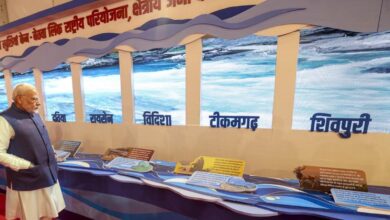ASI explores 100 archeological remains in MP’s Bandhavgarh Tiger Reserve

In a first of its kind exploration, the Archaeological Survey of India (ASI), Jabalpur circle, found more than 100 remains including largest Varha sculpture of 2nd century to 15th century in the core area of the Bandhavgarh Tiger Reserves in Madhya Pradesh’s Umaria, said an official. A team of 10 officers from ASI, Jabalpur circle, and two forest officials explored the remains and 26 caves, mainly Buddh, for the first time between May 20, 2022 and June 27, 2022. “This is an important exploration and documentation to know about the rich culture of Baghelkhand,” said ASI, Jabalpur circle, superintending archaeolog, Dr Shivakant Bajpai, who led the exploration.“A large Varaha sculpture measuring 6.4×5.03×2.77 metre of 9th –13th century CE is found. It appears to be the world’s largest sculpture,” he added. Twenty-six caves of 2nd Century CE to 5th century CE were found. Most of the caves belong to Buddh. The remains of Mahayana sect of Buddhism like chaitya shaped doors and cells containing stone beds came to light. “The team found a Votive Stupa and a Buddh pillar fragment containing miniature stupa carving. The votive stupas held the ashes of the monastic dead to be eternally in the presence of the Buddha Shakyamuni. These are roughly dated back to 2nd -3rd century CE,” said Bajpai. The other findings include stone games, water filter structure, coins and inscriptions, he added. According to ASI, 24 Brahmi inscriptions datable from 2nd century CE to 5th century CE was found. Some remains of Gupta period like door jambs (cave 16). The cell of the cave shows typical Gupta carvings of 4th-5th century CE. “Twenty-six ancient temples/remains and two Saiva math of Kalachuri period (9th century CE to 11th Century CE). Forty-six new sculptures also came in the light. Nineteen water bodies were found. Various quarry sites and brick kiln were found. In the inscriptions, Kaushami, Mathura, Pavata (Parvata), Vejabharada and Sapatanaairikaa were found mentioned. Important Kings mentioned in the inscriptions are Maharaja Bhimsena, Maharaja Pothasiri and Maharaja Bhattadeva. Archaeolog Bajpai said exploration of remains in the presence of wild animals was not an easy task. “Many times, we had to runaway from the site due to presence of wild animals. In Bandhavgarh, more than tiger, wild elephants created trouble for us but the forest officials supported us,” he added. An archaeological site was discovered for the first time in Bandhavgarh in 1938.






